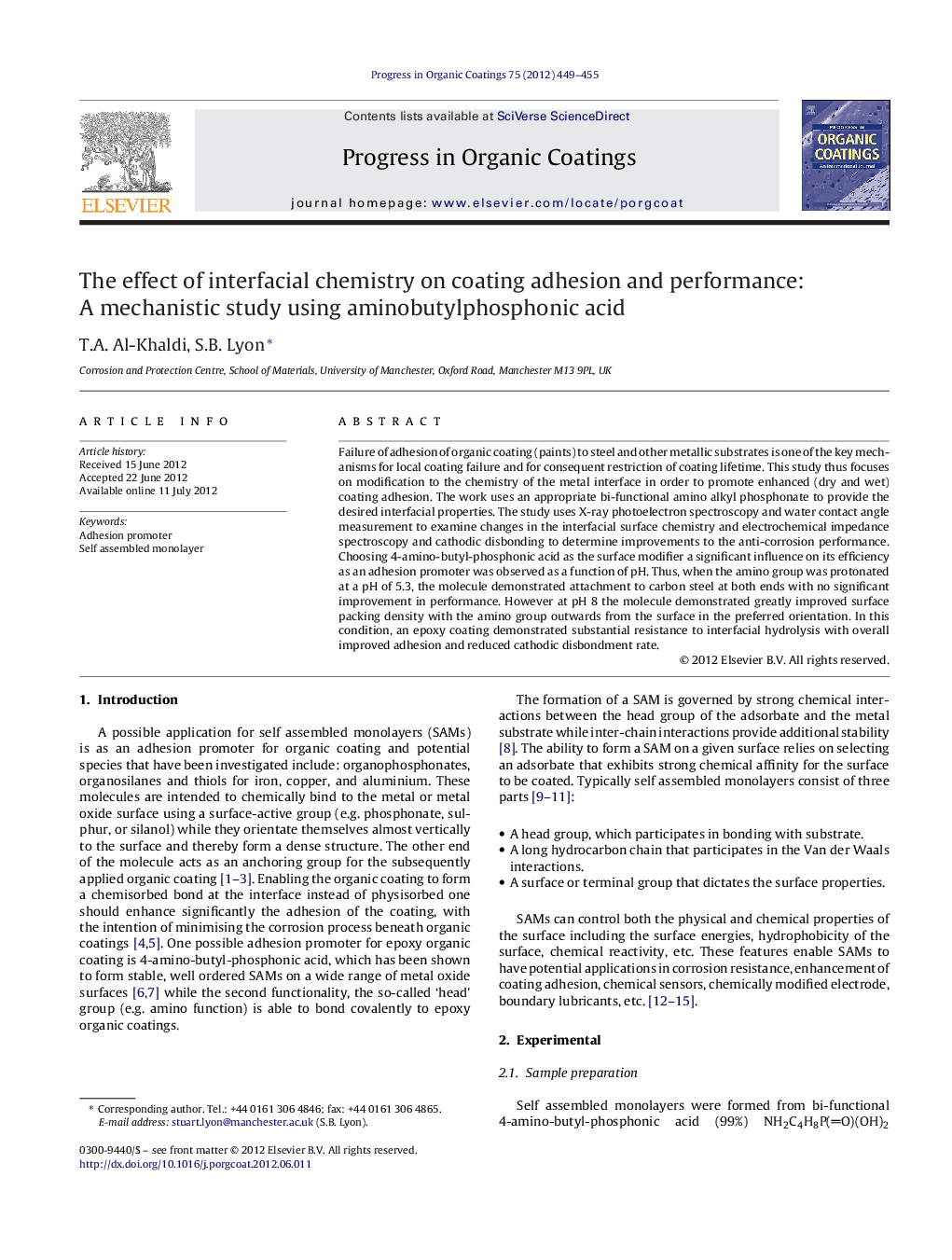| Article ID | Journal | Published Year | Pages | File Type |
|---|---|---|---|---|
| 692951 | Progress in Organic Coatings | 2012 | 7 Pages |
Failure of adhesion of organic coating (paints) to steel and other metallic substrates is one of the key mechanisms for local coating failure and for consequent restriction of coating lifetime. This study thus focuses on modification to the chemistry of the metal interface in order to promote enhanced (dry and wet) coating adhesion. The work uses an appropriate bi-functional amino alkyl phosphonate to provide the desired interfacial properties. The study uses X-ray photoelectron spectroscopy and water contact angle measurement to examine changes in the interfacial surface chemistry and electrochemical impedance spectroscopy and cathodic disbonding to determine improvements to the anti-corrosion performance. Choosing 4-amino-butyl-phosphonic acid as the surface modifier a significant influence on its efficiency as an adhesion promoter was observed as a function of pH. Thus, when the amino group was protonated at a pH of 5.3, the molecule demonstrated attachment to carbon steel at both ends with no significant improvement in performance. However at pH 8 the molecule demonstrated greatly improved surface packing density with the amino group outwards from the surface in the preferred orientation. In this condition, an epoxy coating demonstrated substantial resistance to interfacial hydrolysis with overall improved adhesion and reduced cathodic disbondment rate.
► Bi-functional amino phosphonates adsorb onto steel to modify the surface. ► Molecular orientation depends on the pH of adsorption. ► Process improves coating adhesion and reduces cathodic disbondment rate.
